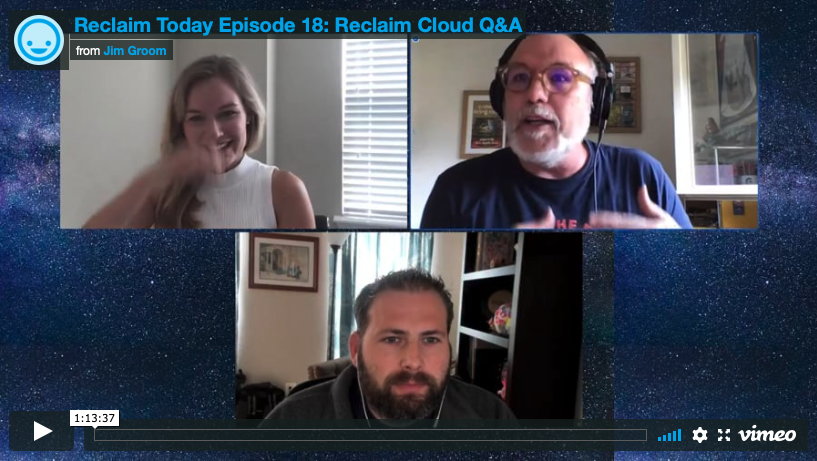With the steady introduction and roll out of Reclaim Cloud, I’ve really just scraped the surface of the technical components and have spent more of my time focusing on how these new cloud offerings fit in with our existing suite of Reclaim Hosting products. There are quite a few differences between Reclaim Cloud and cPanel, but there are also some similarities, too. So while it may be helpful for some to ‘forget everything you thought you knew about hosting’ in order to get into this new Dockerized mindset, I find myself falling back on compare/contrast visuals and old gold hosting metaphors to make sense of it all. So for those of you who may be struggling to understand where Reclaim Cloud fits in, keep on reading!
Here’s a running list of the differences between cPanel and Jelastic PaaS (i.e. Reclaim Cloud) that have stuck out to me so far:

The other day the Sales team (i.e. Katie, Jim, and myself) had a brainstorming meeting discuss how we can talk about Reclaim Cloud has it relates to our other products. Aside from the obvious reasons it will be important to know the Cloud Hosting model inside and out, it will also be crucial to understand it in relation to what we currently offer and support. The fact that I can signup for a Shared Hosting cPanel account at Reclaim and install WordPress and Omeka, and then simultaneously head over to Reclaim Cloud and install the exact same applications will raise the question, “when would I use one over the other?” And by extension, “who is Reclaim Cloud for?”
I’m copying a piece of the Reclaim Cloud about page that has stuck with me:
The term “cloud” can get bandied about when it comes to the internet, but at its core Cloud Computing was inline with the vision that resources could scale seamlessly based on usage rather than some perceived notion of a high-water mark of usage. Like other utilities such as water, electricity, and gas, computing power would be a resource that you would pay for based on actual usage rather than projects.
https://reclaim.cloud/about/
This got me thinking about the well-loved (or not-so-loved, lol) House metaphor. If we think of our web presence or website as our house, in which all rooms are a different page of your site, and your street address and directions to your house are essentially DNS records, the world of web hosting very quickly starts to take shape. For me, Reclaim Cloud now fits into this particular metaphor as a lightbulb, or more broadly, as my utilities. When I go to the store and buy a pack of lightbulbs, I do my research beforehand. I figure out which lightbulb is going to last the longest, which lightbulb is going to be the most energy-efficient, and which lightbulb is going to put out the best type of light based on my needs. I may even be willing to spend a little more money up front to make sure I check these boxes. Then when I come home, I don’t plan to install my lightbulbs, turn on all the lights, and then leave the house. I will turn these lights on and off as I walk into each room to conserve energy.
That is the main mindset shift between Reclaim Cloud and Shared cPanel Hosting. My current cPanel account has quite a few WP installs, some of which I use frequently and others I just spun up one day to test and then left there. In cPanel, there’s no additional cost to me to turn on all my lights and then leave the house. cPanel Shared Hosting is a fixed cost of 30 – 100 bucks a year, and I know that no matter what, that’s all I’ll owe at the end of the day. But if I’ve got a lot of big projects that require a lot of energy (i.e. resources), or if I want to play around with apps that aren’t compatible with cPanel’s infrastructure, I’ll begin to hit limits.

At Reclaim Cloud, I’m no longer confined to a single software stack. (In my last post I wrote in depth about creating new environments.) I can play around with almost any application out there, and I can temporarily turn them on and off as I see fit. Reclaim Cloud isn’t a fixed cost, but I’ll only pay for the exact resources that I use. This will keep me engaged with my web presence, constantly grooming it and evaluating what I’m using and what is a priority to me. And for big WordPress Multisite that’s sitting on a 32GB server simply due to the infrequent moments they have busy traffic day, Reclaim Cloud could be a cost saver since resources will automatically scale up and down with the traffic. This also means those pesky ‘Resource Limit Reached‘ errors in cPanel are no more!
I recently sat down with Tim and Jim to get their thoughts on all of this, and we ended up chatting for over an hour for Reclaim Today’s latest episode, 018: Cloud Q&A. Worth a listen if this conversation is of interest to you!

